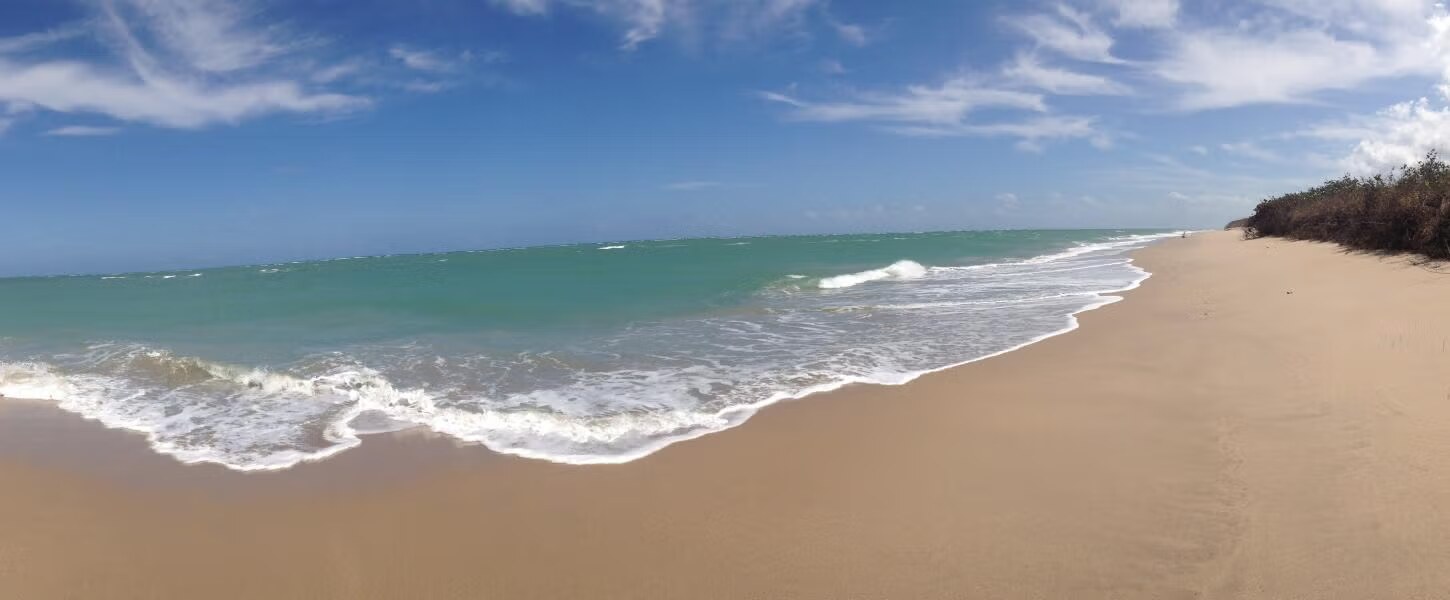- Home
- Florida History
- Florida Heritage Sites
- St Lucie Inlet Preserve State Park
ST LUCIE INLET
PRESERVE STATE PARK
By Mike Miller November 12, 2025
OVERVIEW
St. Lucie Inlet Preserve State Park covers 4,835 acres on the northern tip of Jupiter Island. The site lies east of Port Salerno, Florida and is only accessible by boat.
It protects one of Florida's last undeveloped barrier islands. The park has pristine beaches, mangrove tunnels, and offshore reefs. The preserve focuses on conservation.
A 1-mile nature trail and boardwalk winds through scrub and hammock. Nearly 4,000 acres of the park are submerged marine lands.
 Beach at St. Lucie Inlet Preserve State Park
Beach at St. Lucie Inlet Preserve State ParkHISTORICAL SIGNIFICANCE
Native Americans inhabited the land for centuries before European contact. The primary group was the Ais (also called Jeaga or Ais-Jaega).
They were a coastal tribe whose territory stretched from Cape Canaveral southward to the St. Lucie Inlet along Florida's Atlantic coast, including the northern tip of Jupiter Island where the preserve sits.
They occupied the area from at least as far back as the 1500s, as documented by Spanish explorer Pedro Menéndez de Avilés when he noted their villages and canoes in the 1560s.
The Ais relied on the barrier island's resources for fishing, shellfish harvesting, and hunting in mangroves and scrub habitats. Archaeological evidence includes a burial mound associated with the Ais.
European diseases, wars, and land loss led to the Ais' decline by the early 1700s, with survivors absorbed into other tribes. The preserve forms part of the Florida Native American Heritage Trail.
The Board of Trustees of the Internal Improvement Trust Fund holds fee simple title to the land.
On September 15, 1969, they leased the parcel of land to the Florida Department of Environmental Regulation's Division of Recreation and Parks for 99 years. The lease ends September 14, 2068.
Additional parcels of land came through the Land Acquisition Trust Fund program. The park opened to the public in 1969.
It preserves natural communities like marine worm reefs and sea turtle nesting sites. Sea turtles including Loggerhead, Green, and Leatherback regularly nest on the beaches.
The park is part of the Great Florida Birding and Wildlife Trail. Wildlife includes bobcats, otters, and raccoons. While the Preserve doesn't have historic buildings, it safeguards prehistoric coastal ecosystems.
The park is home to the northern range of Florida’s Coral Reef and protects valuable habitat for many Caribbean coral and tropical fish species.
The reef is approximately a half mile offshore from the park's beach, contributing to some excellent surf fishing.
VISITING DETAILS
The park starts at the St. Lucie Inlet, east of Port Salerno, FL 34997. It’s open daily from 8 a.m. to sundown.
It's only reachable by boat, so launch your boats from Cove Road or Manatee Pocket marinas. Paddle or motor across the Intracoastal Waterway.
Time your trips for slack tide to miss heavy currents. For a four-hour outing, launch two hours before high tide.
Admission fee is per boat, so check their website for the current price and bring exact change for the Honor Box. I've often wondered how many people have the honor to leave the money.
Dock at the beach or boardwalk. Then you can hike the 1-mile loop trail through mangroves, snorkel or dive near reefs to see tropical fish, and look for sand dollars at low tide.
There is a picnic pavilion on the beach with tables and grills. Leash pets and keep them off the beaches. Avoid turtle nesting areas from May to October.
ST LUCIE INLET PRESERVE STATE PARK WEBSITE
LOCATION MAP

Florida is the fastest-growing state in the United States and also the fastest-changing. If you see anything in this article that has changed or is in error, please let me know.
Our free daily Ezine, Florida Heritage Travel, has 18,000 subscribers. We also have 130,000 followers on Facebook who love off the beaten path Florida.
By Mike Miller, Copyright 2009-2025
Florida-Back-Roads-Travel.com
Florida Back Roads Travel is not affiliated with or endorsed by Backroads, a California-based tour operator which arranges and conducts travel programs throughout the world.
